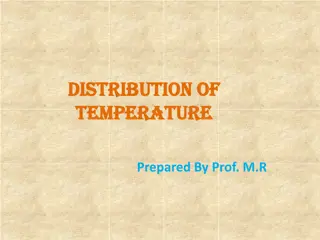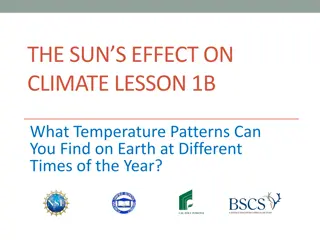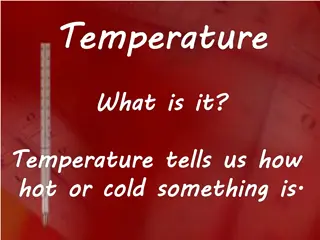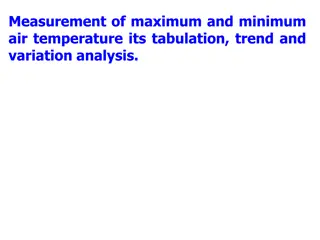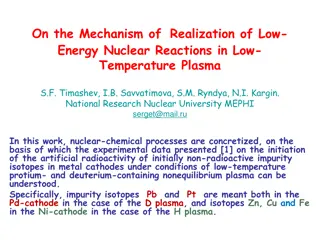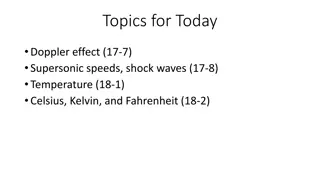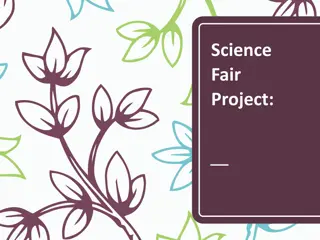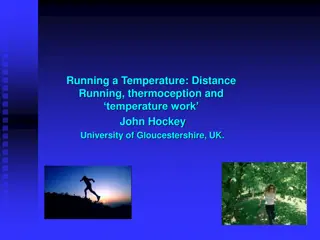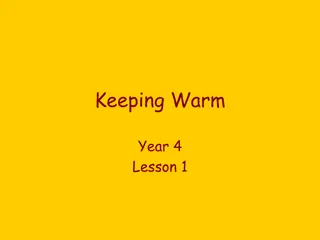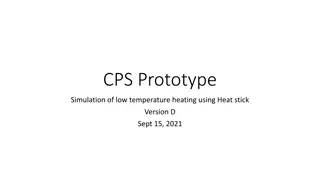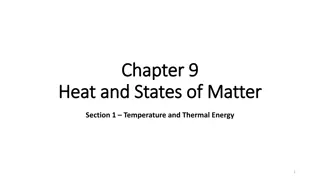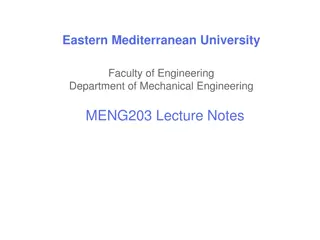
Impact of Low Temperature on Food Quality and Safety
Discover the effects of low temperature on fruits, vegetables, meat, poultry, and fish. Learn about chilling injury, texture changes, flavor loss, nutrient alterations, and more. Understand how cold temperatures can influence the quality and shelf life of various food products.
Download Presentation

Please find below an Image/Link to download the presentation.
The content on the website is provided AS IS for your information and personal use only. It may not be sold, licensed, or shared on other websites without obtaining consent from the author. If you encounter any issues during the download, it is possible that the publisher has removed the file from their server.
You are allowed to download the files provided on this website for personal or commercial use, subject to the condition that they are used lawfully. All files are the property of their respective owners.
The content on the website is provided AS IS for your information and personal use only. It may not be sold, licensed, or shared on other websites without obtaining consent from the author.
E N D
Presentation Transcript
E F F E C T O F LO W T E M P E R AT U R E O N F O O D Presented By Ms. E. Krithika Assistant Professor and Head Department of Food Science and Technology Arul Anandar College Karumathur, Madurai
Effect of low temperature Effect of low temperature on on CONTENTS TO BE DISCUSSED Fruits and Vegetables Fruits and Vegetables Meat Meat Poultry Poultry Fish Fish 2
THE EFFECT OF LOW TEMPERATURE ON FRUITS AND VEGETABLES
Chilling Injury: Some fruits and vegetables are sensitive to low temperatures, particularly those that are tropical or subtropical in origin. Exposure to temperatures just above freezing can cause chilling injury, leading to symptoms like pitting, discoloration, water soaking, and increased susceptibility to decay. POINTS TO BE NOTED Slowing of Ripening: Cold temperatures can slow down the ripening process of many fruits and vegetables. This can be advantageous during storage, as it prolongs their shelf life. Reduced Respiration Rate: Low temperatures can decrease the respiration rate of fruits and vegetables. Slower respiration means slower degradation of organic matter, which helps in maintaining the quality of produce during storage. 4
Changes in Texture: Cold temperatures can cause changes in the texture of fruits and vegetables. For example, some fruits may become softer or lose their crispness when exposed to low temperatures for extended periods. Loss of Flavor: Extended exposure to low temperatures can lead to a loss of flavor in some fruits and vegetables. This is because cold temperatures can inhibit the production of volatile compounds responsible for aroma and taste. POINTS TO BE NOTED Frost Damage: Frost can cause significant damage to many fruits and vegetables by freezing the water inside their cells, leading to cell rupture and tissue damage. Frost can also damage delicate plant structures, such as flowers and young fruit. 5
Altered Nutrient Content: Cold temperatures can affect the nutrient content of fruits and vegetables. While some nutrients may be preserved better at low temperatures, others may degrade more quickly. POINTS TO BE NOTED Susceptibility to Pathogens: Cold-stressed fruits and vegetables may become more susceptible to pathogens, increasing the risk of decay during storage. 6
THE EFFECT OF LOW TEMPERATURE ON MEAT
Frozen Storage: Low temperatures, typically below 0C (32 F), are commonly used for long-term storage of meat. Freezing slows down microbial growth and enzymatic activity, effectively preserving the meat for extended periods. However, freezing can also cause some damage to the meat's cellular structure due to the formation of ice crystals, leading to potential texture changes upon thawing. POINTS TO BE NOTED Texture Changes: When meat is frozen and then thawed, the water within its cells can form ice crystals. These crystals can rupture cell membranes, leading to the release of moisture upon thawing. This can result in a loss of juiciness and tenderness, as well as a softer texture due to the breakdown of cell structures. To minimize texture changes, it's important to freeze meat properly (e.g., in vacuum-sealed bags) and thaw it slowly in the refrigerator. 8
Color Changes: Freezing and subsequent thawing can also affect the color of meat. Often, frozen meat may appear darker or discolored upon thawing due to oxidation reactions that occur during freezing and storage. While this doesn't necessarily indicate spoilage, it may affect the perceived quality of the meat. POINTS TO BE NOTED Cooking Considerations: When cooking frozen meat, it typically takes longer than fresh meat due to the need to thaw it completely Additionally, frozen meat may release more moisture during cooking, affecting the texture and flavor of the final dish. For best results, it's recommended to thaw meat thoroughly in the refrigerator before cooking. before cooking. 9
THE EFFECT OF LOW TEMPERATURE ON POULTRY
Reduced Growth Rate: Cold temperatures can slow down the growth rate of poultry, as they need to expend more energy to maintain their body temperature. This can result in decreased weight gain and slower development. Decreased Feed Intake: Birds may eat less when it's cold, as they use more energy to keep warm. Reduced feed intake can lead to slower growth rates and lower overall productivity. POINTS TO BE NOTED Increased Energy Requirements: Poultry need to use more energy to maintain their body temperature in cold environments. This means they require more feed to meet their energy needs, which can increase production costs. 11
Susceptibility to Diseases: Cold stress can weaken the immune system of poultry, making them more susceptible to diseases such as respiratory infections. Additionally, cold and damp conditions can promote the growth of pathogens in the poultry house. Frostbite: Exposed body parts of poultry, such as combs, wattles, and feet, are susceptible to frostbite in extremely low temperatures. Frostbite can lead to tissue damage and, in severe cases, may result in amputation or death. POINTS TO BE NOTED Reduced Egg Production: Cold stress can impact egg production in laying hens. Birds may lay fewer eggs or experience interruptions in their laying cycle due to the physiological stress of cold temperatures. 12
THE EFFECT OF LOW TEMPERATURE ON FISH
Metabolism: Cold temperatures can slow down the metabolism of fish. As a result, they may become less active and require less food. This reduced metabolic rate helps conserve energy during colder periods. Respiration: Cold water holds more dissolved oxygen than warm water, which is beneficial for fish. However, extremely low temperatures can also reduce the rate of oxygen diffusion in water, making it harder for fish to extract oxygen from their environment. This can lead to respiratory stress, especially in species that are less tolerant of cold temperatures. POINTS TO BE NOTED Movement and behavior: Fish may alter their behavior in response to colder temperatures. Some species migrate to warmer waters, while others may seek refuge in deeper areas where the water is relatively warmer. Cold temperatures can also affect the swimming ability of fish, making them slower and less agile. 14
Growth and reproduction: Cold temperatures can slow down the growth rate of fish and delay reproductive activities. In some cases, it may even disrupt reproductive cycles, leading to decreased spawning success. Immune function: Cold stress can weaken the immune system of fish, making them more susceptible to diseases and infections. Parasites and pathogens may also thrive in colder environments, posing additional health risks to fish populations. POINTS TO BE NOTED Freezing: In extreme cases, such as during severe cold snaps or in icy waters, fish can be exposed to freezing temperatures. Ice formation on the surface of water can reduce access to oxygen and cause physical damage to fish tissues, leading to injury or death. 15

